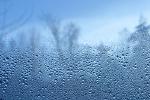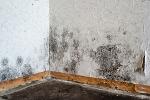Condensation and black mould
Everyday activities in the home can lead to condensation and mould forming. It's normal to find condensation in a house and a standard property should be able to accommodate both extremes of occupant's lifestyle such as the very little humidity created by a small household to the increased humidity created by a larger family , especially during the colder months.
However, there is no definitive test to prove that condensation is caused by tenant behaviour and it can only be ruled out through a process of elimination. Landlords must first confirm that they have fulfilled their responsibilities by addressing the following key questions:
- Is the property dry and properly insulated?
- Is there sufficient effective mechanical ventilation?
- Is there a fully controllable heating system?
An often-overlooked aspect is ensuring that the building fabric is dry. Moisture from wet building materials can increase indoor humidity levels, Additionally, wet walls have reduced thermal efficiency, making it harder to maintain temperatures above the dew point, which in turn exacerbates condensation issues. This can lead to a cycle of secondary condensation problems. Advising tenants to open windows is counterproductive, as it worsens the situation. Instead, a fully controllable and adequate heating system allows residents to effectively manage room temperatures as well as, ensuring the property is well ventilated with a combination of continuous running silent extractor fans in the areas of moisture source and window trickle vents.
Making the property energy efficient by installing wall and roof insulation helps tenants maintain a comfortable room temperature while reducing the risk of condensation forming on cold surfaces.
The Energy Performance Certificate for the property can provide this information and also recommend further.
Tips to reduce condensation
- Maintain a comfortable temperature: Aim to keep your home between 18°C and 21°C. This helps minimize condensation on cold surfaces. If you're facing challenges with heating or energy costs, consider seeking available support.
- Control humidity levels: Condensation occurs when there's excess moisture in the air. Ensure that vents and air bricks are clear of obstructions.
- Ventilate while cooking and bathing: Open windows slightly during activities like cooking or bathing to help reduce steam. Close doors and use extractor fans when possible. Keep windows open while bathing or cooking and leave them open for about 20 minutes afterward (if it's safe to do so).
- Dry clothes outdoors: Whenever you can, dry your laundry outside. If you must dry clothes indoors, slightly open a window and keep the door closed.
- Air out after activities: Keep windows open while bathing or cooking and leave them open for about 20 minutes afterward (if it's safe to do so).
- Wipe down surfaces: Regularly wipe condensation from windows, walls, and tiles. After bathing, dry off shower doors and tiles to remove moisture.
Mould
Mould growth will form if condensation is not wiped down and removed. This is common in most homes. You can prevent it becoming a serious problem, or damaging your possessions, by wiping it down with a mould spray as soon as you notice it. If left untreated it can lead to problems such as staining of wallpaper, wall surfaces, window frames, and damage to furniture and clothing.



 Share this page on Facebook
Share this page on Facebook
 Share this page on Twitter
Share this page on Twitter
 Print this page
Print this page





